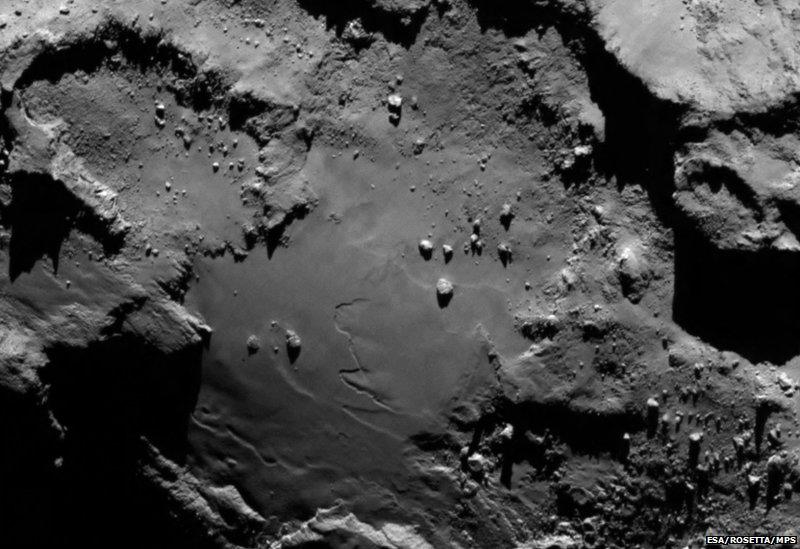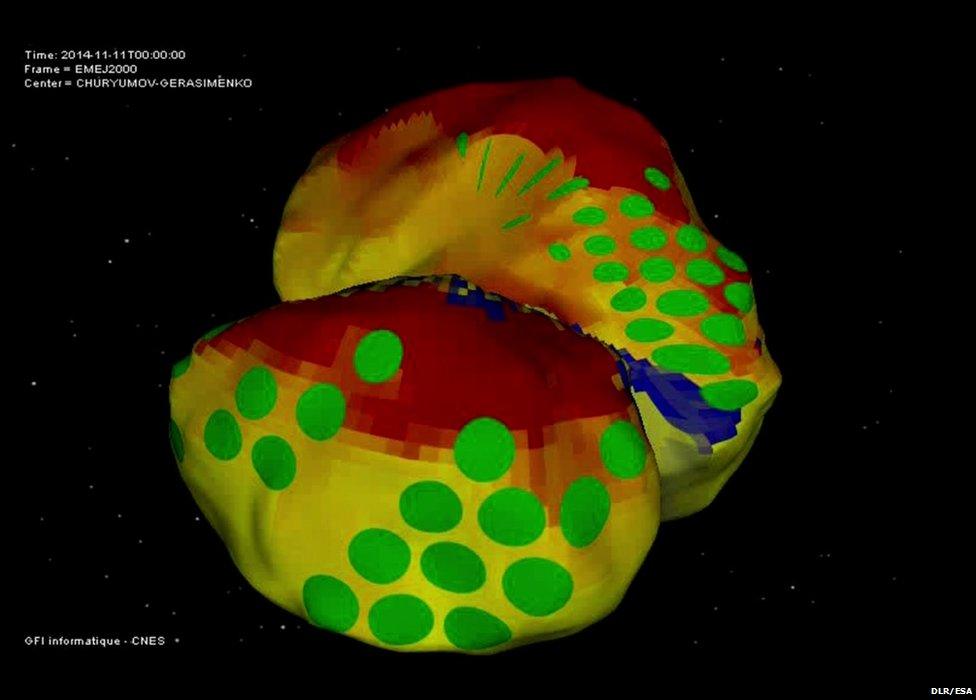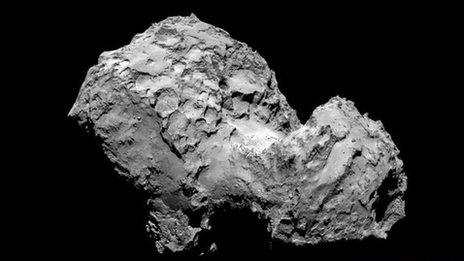Rosetta captures high resolution images of comet 67P
- Published

As Rosetta moved into what's officially called a "hyperbolic orbit", the cameras on board have been busy taking new images of the strange, icy body, comet 67P.
"It was very emotional to see these high-resolution pictures," said Dr Holger Sierks, principal investigator of Osiris - the main science camera system onboard Rosetta.
"We've never seen images like this before in this detail, and with the features we never really thought to see."
The close-up image above shows a range of features on the surface including boulders, craters and steep cliffs.
The image was taken from a distance of 130km and the image resolution was 2.4m per pixel.
"We saw boulders all over the nucleus," said Dr Sierks.
"Some are the size of houses. And I want to understand how did they get into place, what are they made of, and how will they evolve?
"We will stay with the comet through its most active phase, and then afterwards through the decay of activity. We are expecting to see the comet evolve and the surface evolve. We might start to see the boulders moving, falling apart and even reforming."
copy.jpg)
This image above was taken on 3 August, from a distance of 285km. Scientists are curious about the neck area joining the two main parts. They believe there may be fresher ice at this point but they do not yet know why.

This image shows what's termed the comet's "head" at the left of the frame, which is casting shadow on to the "neck" and "body" to the right.
The image was taken from a distance of 120km and the image resolution is 2.2m per pixel.

This image was taken from a distance of 550km. The exposure time of the image was 330 seconds and according to the European Space Agency, external, the comet nucleus is saturated to bring out the detail of the comet's activity. Rosetta will be very interested in the gas and dust that is coming off the surface. As it gets closer to the Sun, this activity will increase.
"We are already seeing dust lifting up from the surface. With the deep exposure, we are seeing the first jets - this is localised activity, localised jets of dust."
As well as the images, the Esa researchers are getting their first scientific data from 67P.
They've already identified water coming from the surface in a haze of gas.
"The rate at which it is escaping is two plastic cups per second," said Dr Sam Gulkiss, who is the principal investigator of the Miro instrument.
"That's about one-third of a kilogramme of gas per second coming off the nucleus. That is going to increase a hundred to a thousand times as it gets closer to the Sun."

This image, resembling a colourful, spotty mushroom, indicates possible landing sites for the Philae lander, due to touch down on the surface on 11 November.
The red areas are in constant sunshine, while the blue are in constant darkness. The optimum is in the orange/yellow areas, and over the next month researchers will be taking measurements to try to identify the best location.
- Published6 August 2014
